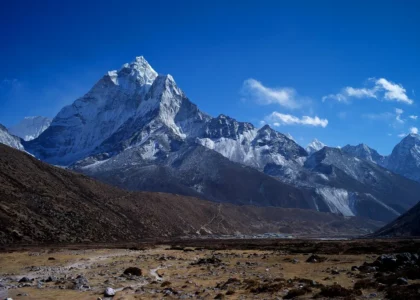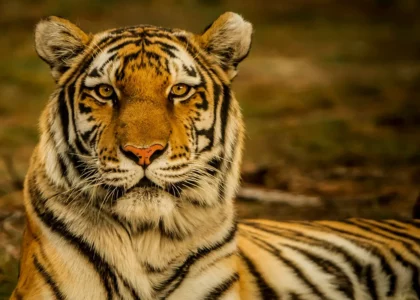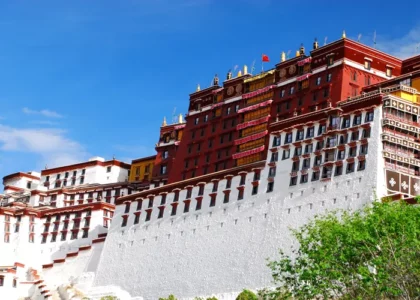A Guide to Travel in Nepal- What to Take? Trip check list
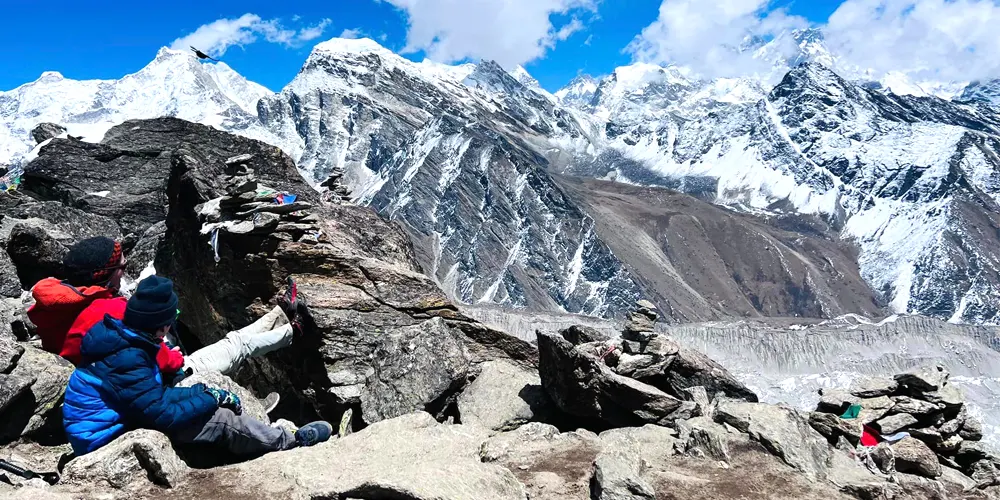
A guide to travel in Nepal
Nepal is famous for its stunning landscapes, mountainous treks, and unforgettable experiences. The most renowned summit is the mighty Mount Everest, the tallest mountain in the world, which draws people from all over the globe to view its majestic peak. However beautiful and impressive as it is, there is much, much more to Nepal than Mount Everest. We will discuss a guide to travel here to Nepal. We will discuss it here and give you more Info about a guide to travel in Nepal.
From the traditional teahouses and ancient monasteries to the rich culture and mouth-watering cuisine, Nepal is one of the most unique places in the world. The Himalayan mountain range is the “spine” of the country and holds some of the nation’s most valued treasures. The best way to explore these beautiful summits is by trekking them, but there are a few things worth knowing before you start a guide to travel in Nepal.
What to take for a guide to travel in Nepal
When trekking through tricky terrain, having a few essentials is crucial. You’ll need your passport, trekking permits, and insurance details; these should be kept in a waterproof bag in an accessible place, as the licenses will be checked at various points along the trail.
You’ll also need:
- Sleeping bag – anything from -30° to a -15° bag is sufficient
- Warm jacket
- Gloves
- Worn-in hiking shoes
- Toilet paper
- Reusable water bottle
- Camera
- Sun cream, sunglasses, and sun hat
- Lip balm and moisturizer
- Head torch
- Cash
- A book
- Trekking poles
Invest in clothes that dry quickly and retain warmth to layer up easily. Bring something comfortable to wear on your feet in the evening so you can take your heavy boots off, and always bring plenty of snacks. For more Info and detailed planning and checklist,
Caption: Every trek is different, so it’s essential to follow safety procedures
Where to go
Trekkers are spoiled for choice in this beautiful region. If this is your first trek, the best thing to do is look for Everest view treks that offer the most features that suit you. Look at difficulty levels, trek length, budget, and scenery options to nail down the proper trek.
- Everest Base Camp is the most popular option for anyone looking for a spectacular close-up of the mountain. You can also see Sherpa villages on the way, as well as see the Dudhkoshi River and learn about famous mountaineers who have gone before you.
- Annapurna Circuit offers stunning views of the Annapurnas, Macchupucchre, Dhaulagiri, and Manaslu. Trekkers acclimate as they traverse various landscapes, from fresh alpine valleys to arid peaks. This moderately complex trail lasts 14 days.
- Manaslu Base Camp is a stunning trek with incredible vistas of the peaks along the Nepal-Tibet border. It is an adventurous trek for those looking for something more challenging and remote. The rugged terrain demands that a Nepali guide or Porter accompany at least two trekkers, which takes around 15 days.
There are many more treks to choose from, so consider what you hope to achieve with your tour and use the criteria to determine which one is right for you.
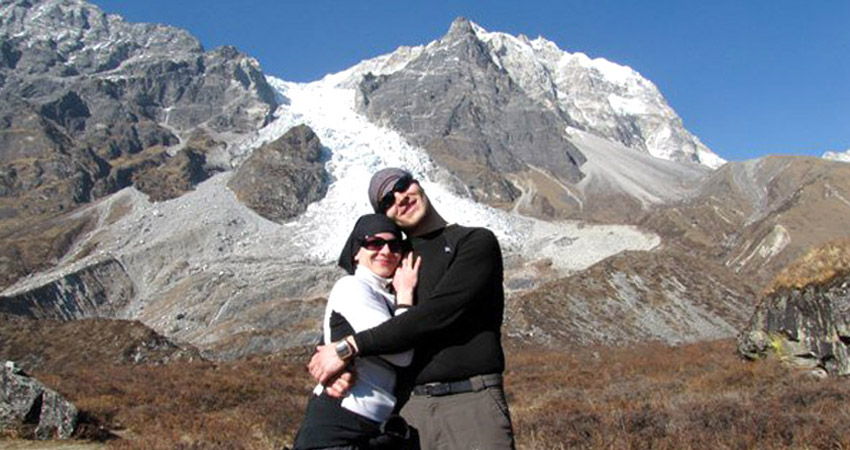
Safety
Climbing Everest does not come without its difficulties. You’re more likely to get into MENSA than make it up to the summit and back safely, so it is essential to take extra precautions to ensure your safety.
First, ensure that a guide always accompanies you, and let other people know your plans so that someone will see if you are missing. Stick to the high side of the route and get regular weather updates to stay ahead of any changes in wind direction and conditions.
It’s important to remember that avalanches will likely occur after heavy snowfall. Avoid Trekking when snow is predicted or following an earthquake to minimize risk.
Altitude sickness is a real danger in Nepal. It happens when the body does not get enough oxygen to allow the body to function normally. Cut back on sugar, stroll uphill, and stay hydrated to minimize the effects.
A guide to travel in Nepal will provide you with a lifetime’s worth of memories. You remember to pack the right equipment. Choose the correct route and take all the safety precautions to ensure you have the best possible time.
Your Trek Leader and Support Staff
An experienced trekking guide and Porter will lead your Nepal trekking guide and Porter, joining you from Kathmandu, Pokhara, and Lukla at your convenience. Our guides have trained for and attained a Trekking Guide license provided by the Government.
The license exam is organized by TAAN and the Nepal Academy of Tourism and Hotel Management (NATHAM) annually. They have vast knowledge about the trekking trails and kinds of medical treatments and emergency services, as well as first aid, altitude sickness, and other relevant issues. Our Porter will safely take your belongings, making walking easy, pleasant, and comfortable. Our Sherpa and Porter will carry a maximum of 30 kg for two trekkers’ bags. If you have any extra weight, we suggest you hire another porter, which will cost you an additional amount.
Passport and Visa info
in your Nepal trip checklist, ensure you have a valid passport with at least six months of validity from the return date. You can obtain visas for Nepal from the Nepalese Consulate in your country or upon arrival at Kathmandu Airport. USD 30 or equivalent convertible currency for 15 days for single/multiple entries. If you get a visa for 30 days, It is USD 50 or equivalent convertible currency. USD 125 or equivalent convertible currency for 90 days for single/multiple entries
You can get a Nepal visa before arrival from the Nepalese Embassy in your home country. Likewise, you can quickly get a visa upon arrival at Kathmandu airport and other borders from Nepal.
We find that most travelers find themselves having difficulty as sometimes they don’t have money to get a visa at the time of their arrival. There is no ATM inside the visa section. Though there is a provision for an ATM outside, it is more likely that it doesn’t work sometimes. So, for your comfort, we recommend you bring the cash US$ to get them on arrival visa.
Health Guidelines:
Trekking in Nepal is a beautiful experience and doesn’t involve many risks. However, we suggest you carry out a standard health check and advise your doctor about your travel plans before arriving in Nepal. If required, immunizations should be taken at least six weeks before arrival.
Always have valid health insurance for the whole period of your trip. You can enjoy your Nepal travel guide vacations only when you feel healthy and spirited from the inside. And make sure you are healthy so you can make the trip easily. Thus, we present you with tips on staying healthy before these enjoyable vacations to a great destination become a burden and you go on a journey while you are away.
Before you go:
1. Immunizations or vaccinations, if needed, should be taken at least six weeks before you leave. Some vaccines need about six weeks after you get the shots to reach the highest protection level
2. Get your medical and dental check-up before starting your trip. This will help you be aware of any problems.
Then, you can learn about medicines you might need to take.
3. Enquire fully about your health insurance, in case you might see a doctor while you’re in another country. Take your regular medicines in their original containers and extra prescriptions for them. Also, bring your eyewear prescriptions. Bring a first-aid kit along.
Vaccines You Might Get
Nepal doesn’t officially require any immunizations to enter the country. However, several significant diseases can be prevented, or immunizations significantly decrease the risks.
Consult your doctor once before your Nepal travel guide trip so that he can decide if you need any vaccinations. The treatments you should consider for a Nepal trip include the following:1. Hepatitis A
2. Hepatitis B
3. Japanese Encephalitis
4. Meningococcal meningitis
5. Polio
6. Rabies
7. Tetanus and diphtheria Toxoids
8. Typhoid fever
Money Exchange for the trek
If you trek or tour Nepal, you will need extra money for your expenses. Nepal banknotes are available in Rupees 5, 10, 20, 50, 100, 250, 500, and 1000 denominations, and coins are available in Rupees 1, 2, 5, and 10. Foreign currencies must be exchanged only through banks or authorized money exchangers.
The receipts of such transactions are to be obtained and retained. Upon arrival, visitors can exchange foreign currency at the airport’s foreign exchange counter; although their rates are pretty low, it is better to trade in the city.
You can also withdraw money from ATMs. There are many in the city, and they allow a maximum of 40,000 per day. Note: Most established banks in Asia will not accept foreign currency notes that are old, torn, or faded. Please ensure you have new, clean notes on your Nepal trip checklist.
Accommodation
Accommodation for most of the trek in Nepal is now in a lodge and a teahouse. They care about a basic locally owned guest house with a shared bathroom; some guest houses also offer to attach rooms. The good trekking route now has luxurious lodges like Everest and Annapurna. If you want to stay at the luxury lodge, contact us in advance, and we can book it for you at an extra cost.
You will sleep in a bare room with a bed, mattress, bed cover, and pillow. It would help if you had your sleeping bag and better have a liner. The facilities are pretty bare at the lodge. Some places have no electricity but solar power in the dining room. You can charge your battery for cell phones and cameras at extra cost.
Food During the Trekking in Nepal
We will eat at the local guest house. Our package includes your daily meals, including breakfast, lunch, and dinner. All the guest houses have a menu fixed by a National park or conservation area project. There are local and international hygienic food choices.
You will eat at the same tea house where you stay. Being vegetarian is better in high altitudes and remote areas. The meat items are carried long, so they are not fresh. The typical Nepali food is Dal Bhat ( Rice lentil, mixed vegetable curry, and pickle)
For breakfast, you will have a choice of pancakes (plain, apple, cinnamon, lemon, etc.) served with peanut butter or honey, porridge, egg items (scrambled, boiled, fried, omelet), and bread (toast, chapatti). For lunch and dinner, try Nepali food; they will also serve pasta, pizza, garlic soup, momos, curry, macaroni, and other rice and noodle-based dishes are served.
Drinking water during your trek
Care for water in your Nepal trip checklist for Trekking or any tour. We suggest you drink 3/4 liters of water daily on the trail. Meanwhile, bottled mineral water can be purchased all over Kathmandu and along popular trekking trails. Plastic water bottles are a significant problem in Nepal’s mountain areas, so travelers should purify their water instead of relying on bottled water.
Get water purification iodine or tablets. They are small, cheap, and light to carry. Another better way is to get water filters; they are easy to maintain and use. You can bring two reusable water bottles so that you always have one bottle to drink from while the water in your other bottle is being purified.
Showers and electricity – Most tea houses during the trek have solar hot showers and cold showers available. Few places ever charge the cost for hot showers for the extra cost of around USD 3 to 4. Electricity is usually available in most parts of the route with hydropower; you can charge your battery for the camera and phone; usually, they charge an extra cost of about USD 1 to 2 for complete battery charging.
Health and Fitness:
The main thing for trekking and hiking in Nepal is to think positively and walk 5- 6 hours on the rocky trail. You can be fit for the trek before you arrive here by doing small exercises in your home country. The more stamina you build up, the more effortless it is to trek for high altitude trekking. You can do running, cycling, Zumba, or some yoga practices to boost your stamina. You will walk 5 to 7 hours daily, so be prepared for your legs. The best exercise you can do at home is squats and lunges.
Altitude sickness: Our entire Nepal trek itinerary is designed to climb slowly to prevent altitude sickness. When we ascend above 2500 meters, our bodies must acclimate to the decreasing amount of oxygen available. The early symptoms are a headache, extreme fatigue, and loss of appetite. The only cure for Acute Mountain Sickness is to descend. When we climb slowly, avoid alcohol during your trek, eat crab food, and drink ¾ liters of water daily, which will help you.
Communication during the trek
During the trek, internet service will be available at the lodges with some extra service charges. While you are in this area, many villages have telephone facilities. You can make international calls, and most places have wifi facilities. Now, you can contact your family and friends via the lodges. Our guide has a cellular phone, and we’ll communicate with them frequently to learn about the trek and your health.
Furthermore, we ensure you’re okay, safe, feel right, and have everything up there. Also, the easy way now is to get the local SIM card upon arrival at the airport, which has a 4g/3g network on most routes. Nowadays, Most places on the trekking route have wifi service available. Typically, wifi works for every part of the trek in lodges/lodges, which will be provided with a minimal fee or someplace free.
Travel rescue Insurance for a guide to travel in Nepal
We suggest you have a complete travel insurance package that covers medical, personal accident, and emergency evacuation. Furthermore, it should include trip cancellation, loss of gears, natural calamity, theft of or damage to baggage, etc. While trekking at high altitudes, you get illnesses, minor injuries, or sickness. If you have any problems and get ill or injured during your trek, Above the Himalayan trekking will take care of you, and in an emergency, we will rescue you.
Suppose minor injuries, such as health problems and altitude sickness, occur during the trek. Our staff will descend on you immediately. Emergency Above the Himalayan trekking company will arrange helicopter rescues for more serious medical issues.
We need a guarantee of payment from your insurance company, a cash deposit, or a promise from Kathmandu. While you are trekking with Above The Himalaya Trekking, we will arrange the travel rescue insurance and initial payments. We will claim the refund from your insurance company again. When you buy the insurance, it should cover both rescue and medical assistance. We suggest you provide your complete insurance information when you book your trip with us. This will help us arrange a quick and effective rescue operation and get emergency medical help for an emergency case.
Tipping Info for a guide to travel in Nepal
Tipping is not mandatory, but In the hospitality industry of Nepal, the workers expect some tips while you are on your tour or Trekking.
While on the tour and Trekking, you can tip the guide and Porter. Usually, people list 10% off their trip payable amount. Suppose you have booked the complete board package for your Trekking and tour. But if you hire a guide and porter service, you can tip differently on a per-day calculation basis.
We don’t suggest tipping while you have something to eat at the restaurant as they have already taken a 10% service charge and 13% Government Taxes. However, while you enter the hotel, the bellhop may expect some tipping, and you can get some minor changes for this purpose.
Equipment Renting and buying: It is wise to bring all your clothing and gear from home; however, in Kathmandu and Pokhara, there are many shops where you can buy and rent trek-related equipment.
Your trekking luggage: You will have one Porter for two trekkers to carry your luggage. The maximum weight per trekker is 15 kg, as we never overload our porters. However, you only have your valuables in your backpack., including your sleeping bag and down jacket; other items not required on a trek can be stored in our office or your hotel in Kathmandu and Pokhara.
Transportation Car, Jeep, Tourist, and local bus options
In your Nepal trip checklist, read about different means of transport. You can take a private car, Jeep, and tourist bus to the significant trek start point of the other trekking regions. We can also hire a local sharing jeep if you have a short time and shorten the trip.
We can also use the same means of transport for the return trek to Kathmandu or Pokhara. From Pokhara to Kathmandu, you can take 25 25-minute flight or 6/7 hours drive by bus or private car. The primary way to get there is by driving. Above the Himalayas, Trekking is always careful when choosing the best transport options available for your travel period. We select the means of transport based on your package itinerary and budget.
Flight Options
Most of the local towns have flights to start your trek. We can also fly to Pokhara and start the trek there. Another business in a small provincial town is Lukla, a small Sherpa village located at 2800 meters above sea level.
Kathmandu to Lukla flight offers spectacular views of the 18 highest peaks, and interestingly, four lie above an altitude of 8000 meters. It is about 35 minutes flight from Kathmandu. However, in the busy season, flights divert from Ramechhap to Lukla. To get to Ramechhap, you need to drive for 4 hours. We will take you to the airport and back to the hotel by private transport two times for the trip.
The Kathmandu to Pokhara flight is more accessible and takes just 25 minutes. Many flights go on daily. Similarly, you can take a flight from Jomsom to Pokhara. For the Langtang trek, there are no flight options. You can drive by local bus or private Jeep.
Flight delay/cancelation and changes in the itinerary:
Sometimes, the flight can be delayed or canceled if the weather is terrible. This mostly happens for the Lukla and Jomsom sectors. Be aware that flights in the mountains are based on weather conditions. We constantly endeavor to make sure you reach your destination on time. For any trekking adventure, we will re-arrange your ticket to the next available flight.
If Lukla’s flights are delayed, the client bears all additional expenses, including food and accommodation costs. If you wish to make alternative arrangements, such as a helicopter flight, to avoid flight delays, all other expenses will be your responsibility.
In your Nepal trip checklist, we will try to accommodate you with the same hotel in case of flight delays. We will look for other hotels to determine your availability if it is unavailable until we have a confirmed flight. We will adjust the itinerary to ensure you get as much time as possible in the mountains. This may mean reducing/removing the Kathmandu nights at the end of the trip.
Hotel arrangements after a flight delay
Ensure the flight gets delayed in your guide to travel in Nepal trip checklist. As a result, if you need a hotel, we have to find availability. We will try to manage the same hotel that you used earlier at night. However, in the season, hotels are mostly complete, and it is pretty challenging to get a room. If we can’t get a room in the hotel, we will find alternative options for you.
The check-in time policy applies to guests arriving after 2 p.m. We try to get the room ready as soon as possible. Furthermore, you can put on your bag and use the hotel’s facilities. The hotel will ask you for the extra night’s cost directly, or you can pay for your guide also.
Trip extension
After finishing our package treks and any tour, and if you still have extra days for a guide to travel in Nepal, don’t worry. We will help you make your spare time easier. There are lots of things to do, such as different activities. You can go to Chitwan National Park for a jungle safari tour or a day Hiking trip.
You can also travel to Pokhara, a famous place for adventure activities.
Furthermore, you can try paragliding, ultralight flights, and bungee jumping. We can arrange other tours and make these extra activities optional tours for you. We will also arrange a tour of Tibet and Bhutan. So, if you plan for the Tibet tour and Bhutan after you have a guide to travel in Nepal, please let us know.
Best Price Guaranteed, Easy to change Date, Instant Confirmation
Book This Trip Have Questions?
Have Questions?Talk to Expert
Meet Mr. Purushotam Timalsena (Puru), Nepal's best trek and tour organizer, who has been working in the Himalayas for more than 24 years.
WhatsApp/Viber +977 98510 95 800




